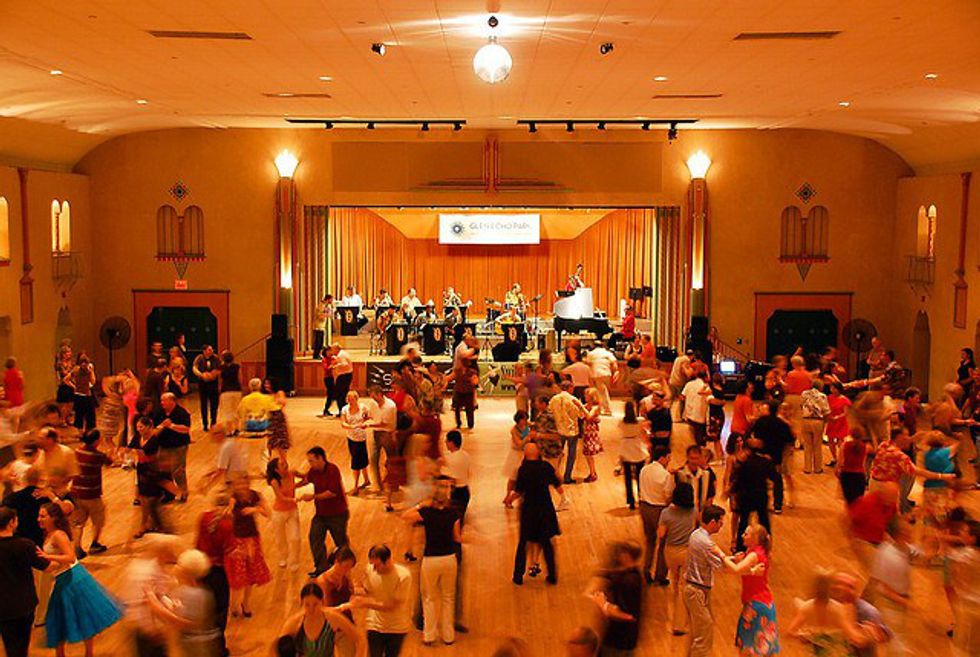With the Dickinson College Swing Dance Club's next major event coming up, there's no more appropriate time to write about swing dancing then... right now!
The event is open to the public, and all dancers of any level are welcome to attend! Since the event includes a beginners lesson early on, there is also no reason not to attend!
But, at this point in the article, I'm sure a lot of you are wondering, what exactly is swing dancing?
The artform is a loose category ascribed to certain types of couples' dancing, which utilizes jazz, big band, bebop, and similar music varieties as the music with which to dance.
There are many different types of swing dancing, including East Coast, West Coast, lindy hop, blues, and Charleston. Generally, the first style to be taught to beginners is east coast, especially because the basic footwork is the simplest to pick up in that there is not a lot of movement and that almost any move happens on certain beats in the footwork.
(Please do not listen to this in its entirety, it's only meant to be an introduction!)
But why should you want to swing dance? Well, there are a plethora of reasons.
Firstly, swing dancing can be great exercise, especially in regards to cardio. Some of the songs can move at a brisk pace, and by the end of it, dancers will be full of sweat. The legs will be getting lots of movement, and the dancer will certainly feel out of breath after a few songs. Of course, not all songs are super fast, but in the span of a four-hour dancing period, you better believe that there will be some of such songs. If you do not believe me, then it may be good to know that coming to a certain amount of lessons at Dickinson will get you a gym credit. If you still do not believe me, then come to the dance and you will see.
Secondly, swing dancing can include some awesome music.
So many styles of jazz music can be applicable to swing dancing. And for a fan of old music, it is pretty cool to hear all the different jazz pieces there are to dance to. Even so, if that style of music is not your thing, then there is no reason to worry.
While swing dancing emerged out of that style of music, it does not mean that you cannot dance to other styles. All you need is a clear beat and a suitable pace. In teaching blues, it is not uncommon for our instructor to use songs like "Apologize" by One Republic or "Gravity" by John Mayer.
In teaching Charleston, one of the best songs to use is "Brown-Eyed Girl" by Van Morrison. In fact, after swing dancing for a while, when one hears a new song, one of the first defining characteristics of it will be whether you can swing dance to it, and if so, what style suits it best.
Thirdly, partner dancing will be extremely helpful down the road. Like golfing or tennis, swing dancing can be done at any age. And be it at community events, company get-togethers, or weddings, having a knowledge of dance will come in handy.
Fourthly, swing dancing is like living in history. One is working with a style of dance not even a century old, yet it still can transport us back to the speakeasies of the roaring twenties or the sock hops of the 1950s. For a history major like myself, it is awesome to be able to experience that.
Lastly, swing dancing is boatloads of fun. In an essay I wrote for an anthropology class last semester, I determined, through randomly polling people at a swing dance event last year, that most individuals had been dragged into the club by another friend, but had absolutely loved it and decided to stick around!
It is not an experience one will regret. For me, all it took was one lesson and I was in love with swing dancing.
The swing dance club at Dickinson has its own little niche on campus, which is open for any to join. What is really cool is the diversity of interests and other involvements within the club.
All members come from different majors and activities on campus, but we are all bound together by one thing -- our love of swing dancing.
Give swing dancing a try. You will not regret it! As my mom used to tell me in regards to vegetables, you cannot say you do not like it until you have tried it.





















